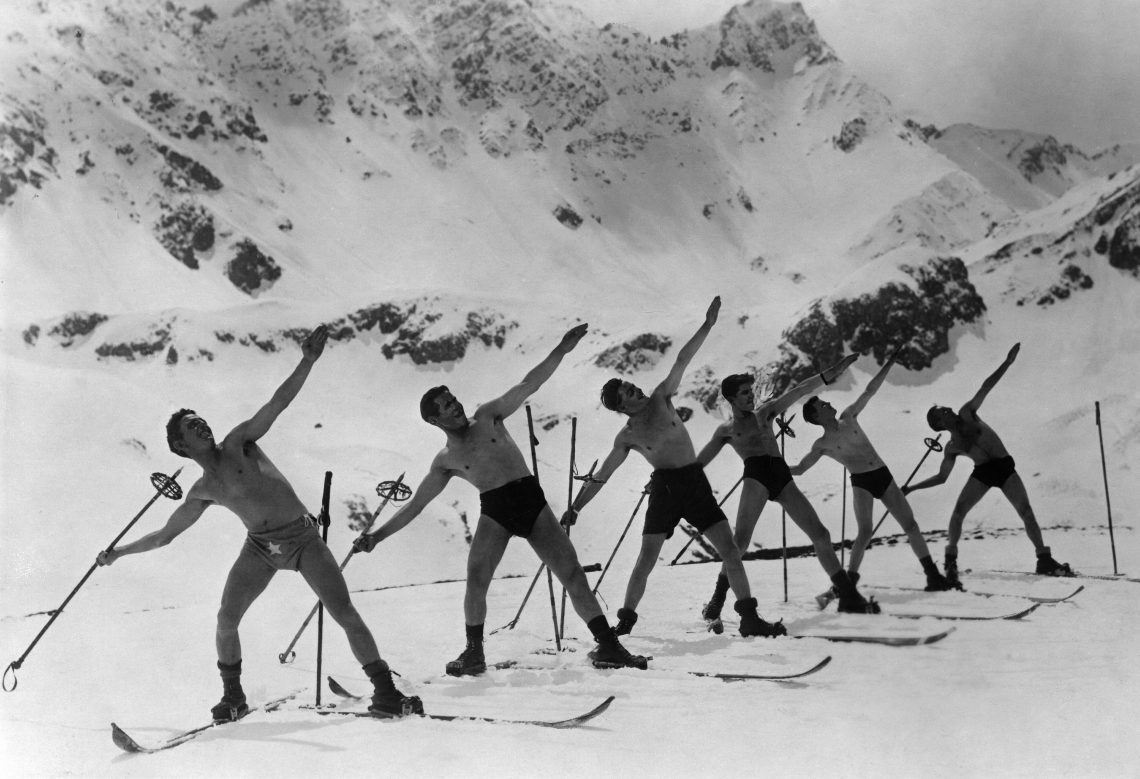Switzerland’s eroded defense capabilities
Seeking the supposed peace dividend after the Cold War, the Swiss dismantled critical parts of their unique national defense system. Restoring it is proving difficult.

In a nutshell
- Switzerland sought to take advantage of the post-Cold War thaw in Europe
- It took risks, assuming it would no longer need a robust and expensive army
- Restoring its legendary citizen-soldier defense system may prove impossible
Throughout their existence, the Swiss Armed Forces have been organized according to the militia principle. In Switzerland, the Latin term “militia” refers to a citizen army and immediately distinguishes it from a standing army. The citizen-soldier who stands up to protect his country and not a warrior who serves for a living characterizes the Swiss military system.
Until well into the 20th century, it was easily possible to operate weapons systems with militia personnel. However, the increasing complexity and rapidly advancing digitalization of military technology bring new challenges. Nevertheless, the Swiss Armed Forces still manage remarkably well to harness talent from the private sector for their service in the military. One example is last year’s upgrade of its cyber command center.
The Swiss Armed Forces were at the top of their game in the 1960s and 1970s, optimally organized and under the “Armee 61” (Army Organization 61) structure. That was more than just an organizational scheme. It was Switzerland’s first and, so far, only joint-defense strategy. Acting in harmony, the army and air force branches, the territorial organization and other players of an integrated defense (national supply, civil protection, police, border guard and more) were well able to defend Switzerland and protect the population.
Facts & figures
Factbox: Unusual beginnings
The origin of the Swiss Armed Forces differs from that of most other armies, which mostly have their beginnings in royal guards or the sovereign’s standing regiments. The Swiss military system was centralized to a certain extent only after the fall of the old Swiss Confederation in 1798. The mandate of the Swiss Armed Forces was formalized after the Congress of Vienna in 1815, at which Switzerland was granted perpetual armed neutrality. From then on, its military has had the task of defending the territory of Switzerland and protecting the population.
Until well into the 19th century, however, Swiss mercenaries served under foreign command. It was not until 1860 that the last Swiss regiments abroad were disarmed. Until then, according to various sources, between 1.1 and 2 million Swiss men had been in French, Dutch, Spanish, Neapolitan or British service. More than 1,000 Swiss generals served in foreign armies. For example, Infantry General Arthur Heinrich Sprecher von Bernegg, a man from Grisons canton, commanded the 5th Corps of the Austro-Hungarian Army in 1910-1912.
Only after the brief Swiss civil war of 1847 between conservative and liberal cantons did the initial cantonal troops form into a federal army. It saw its first major deployment on the occasion of the Franco-Prussian War (1870-1871) when France’s exhausted army under General Charles-Denis Bourbaki fled to Switzerland and had to be disarmed and interned.
However, after the Cold War ended, in the political euphoria of the peace dividend, the country embarked on a systematic dismantling of its military and civilian capabilities. The system created diligently over the decades has been gradually broken up since the mid-1990s. Most air bases, fortresses, obstacles, demolition sites, many powerful fixed weapons, essential buildings and military terrain have been needlessly abandoned or only inadequately replaced. Emergency skills for rapid mobilization of troops, requisition of vehicles and material, air-to-ground weapons deployment, the ability to operate an internment camp, military hospitals and military prisons have nearly vanished. All this occurred under the illusion that an army in the true sense would no longer be needed.
Shallow defense system
The Swiss Armed Forces have been depleted. Generations of excellently trained officers, non-commissioned officers and soldiers, who, due to their knowledge and experience, also generated considerable benefits to civilian society, have gone missing. This eradication has had consequences that must not be overlooked.Since the end of Army Organization 61 in 1995, a series of army “reforms” have cut the force size from 600,000 troops to 100,000 by drastically reducing the length of service from 30 years to barely 10 years for enlisted personnel.
Politics has made it easy to avoid military service and conscription is practically suspended because of the lax handling of recruitment.
This has several negative consequences. There is a deepening shortage of military personnel in armed units, which makes training and deployment difficult and, in some cases, impossible. Also, the militia army is becoming increasingly alienated from society.
Whereas in the past, nearly every child saw their father in uniform and watched with interest the troops quartered in the village, today’s military service, if it takes place at all, generally happens before starting a family, and the smaller army hardly needs quarters outside the military perimeter.
Next, politics has made it easy to avoid military service. Conscription is practically suspended because of the lax handling of recruitment, which also raises questions about so-called conscription justice. Those who do not want to serve in the army can circumvent this constitutionally prescribed duty with the simplest of arguments and perform either civilian service or civil protection. Civilian service can be an option for anyone who is fit for military duty but does not wish to be part of the armed forces. Its duration is 1.5 times that of military service.
The longer duration of voluntary service is considered proof that a conscript has a conflict of conscience and is willing to pay the price for his choice. About 6,000 able-bodied men annually are lost from the military in this way, as serving in a civilian environment is apparently more appealing to them than in the military. Various privileges, from shorter working hours to spending nights at home, make this calculation understandable.
Centralization and inadequate funding
Until the 1990s, Swiss politicians and the electorate voting in referenda showed a great understanding of security policy and generally supported the army as a guarantee for the country’s ability to act even in the most severe emergencies and to survive as an independent state. As this support has eroded, the army is visibly losing essential capabilities.
While in 1960, the share of government spending on national defense accounted for 37 percent of the total federal budget, it was down to a mere 7 percent in 2018. As a share of Swiss gross domestic product (GDP), military spending fell from 1.34 percent in 1990 to 0.67 percent in 2019.
Facts & figures
Just as Switzerland is a country governed by the seven-member Federal Council, the Swiss Armed Forces had the leadership of seven three-star generals, namely the commanders of the four army corps, the commander of the air force, the chief of training and the chief of the general staff. However, with the 2003 introduction of Army Reform XXI, a single chief of defense (CHOD) was installed. This rather un-Swiss concentration of power proved unfortunate and has led to misguided personnel policy. Whereas before the reform, militia officers were allowed to rise to the highest ranks, under the new rules, professional officers have restricted the upper echelons of the career ladder to themselves – even if many lack sufficient operational experience and soldierly know-how.
Read more on Europe’s security situation
Defense is essential
The Visegrad Group and Europe’s security system: a story to watch
The Russia-Ukraine war: Scenarios for Euroatlantic security
Historically, the weight of military issues in Swiss politics has tended to fluctuate like a wave. Neither at the beginning of World War I nor at the beginning of World War II was Switzerland prepared. It was only during the conflicts, but especially afterward, that the political will for national defense became visible in the budget and policies favorable to the armed forces.

The peace dividend that followed the Soviet Union’s implosion led to the enfeebling of the overall defense of Switzerland and, especially, the capabilities of its armed forces. In 2014, citizens who traditionally supported strong security measures rejected a $3.5 billion deal to buy 22 Gripen fighter jets from Saab in a referendum launched by left-wing and army-critical circles (with a 53.5 percent “no” vote). In 2020, the acquisition of a new fighter was approved with a razor-thin majority of only 50.1 percent. (In September 2022, the Swiss government signed a contract for procuring 36 F-35A fighters to be delivered between 2027 and 2030.)
It should be noted that rural regions that tend to be conservative in values are more in favor of the army proposals than the liberal urban and metropolitan centers. There is now a clear urban-rural divide in Switzerland when it comes to security issues.
Of all NATO countries, only Luxembourg spends about as little on defense as Switzerland.
Interestingly, after the full-scale Russian invasion of Ukraine in February 2022, the Swiss parliament voted to increase the defense budget to 1 percent of GDP by the year 2030. The Federal Council, however, does not see any hurry and has moved the date to 2035. Switzerland postponing its defense budget increase for 12 years is not a sign of great determination to protect the country, and even then it will only be half of the expenditure level that NATO expects from its member states. Of all NATO countries, only Luxembourg spends about as little on defense (0.6 percent of GDP). Austria, which is also neutral, has increased its military spending to 1.25 percent of GDP.
The conscript army issue
So, what can one expect now? Due to decades of underfunding and the lack of political will to face the emerging security challenges squarely, the prognosis is dire, if simple. Unless there is a drastic change, the Swiss Armed Forces will continue to be unable to fulfill their primary mission in the long term. In any case, the military needs a very long preparation period to become combat ready.
Facts & figures
Factbox: The case of military police
Established in 2002, the Swiss military security unit (which includes the military police, MP) was designed to be reinforced by militia units if needed.
The concept had a consensus from the chiefs of the Swiss police corps and the police directors of the cantons. However, after a few years, the unit’s assets were taken from it, its capabilities reduced and its responsibilities diluted. The force was downright starved. Whereas the militia element of the military police used to consist of one MP battalion and a corresponding training formation, two and, finally, four MP battalions have been created for the force to fulfill its legally given mission nationwide.
However, more than 10 years after the establishment of the four battalions, they possess equipment for only one battalion plus the training unit, as in the original 2002 plan. Logically, at least two of these MP battalions should be disbanded because they are not operational due to a lack of kit. The armed forces leadership blatantly fails to recognize the value of the military police in today’s operational spectrum and has been unwilling to correct the situation.
Large parts of the Swiss Armed Forces are in a similar predicament. The training process and the Swiss Air Force remain professional, but some of the army units are no longer even capable of marching in lockstep, as the embarrassing performance in the French national holiday parade in 2020 attested: four professional Swiss soldiers stumbled in front of the honorary tribune, in disgrace to the Swiss military establishment.
Like in every developed country, the capabilities of the Swiss national defense system hinge on the political will to finance it according to its mission.
The country may find itself in the middle of a significant crisis, or even war, if Central Europe backslides into drama.
Furthermore, specifically in Switzerland, the question arises whether the militia system, which had a particular suitability for a conscript army, will continue to be the right solution in the future to cope with increasingly complex military gear and the fast-shifting international environment.
Finally, the will to serve in the armed forces is diminishing as society grows more affluent. The 2015 WIN-Gallup International Global Survey showed about 39 percent of Swiss men declaring their readiness to fight for their country. This figure was significantly higher than in Germany (18 percent) but nearly half of that in Finland (74 percent). Among the 64 countries polled, Fiji and Morocco had the highest share of men willing to fight, with 94 percent each – Vietnam and Pakistan came in second, at 89 percent.
Scenarios
No one is readying to attack Switzerland, as it is located at a reasonably safe distance from today’s wars and hot spots. However, the country may find itself in the middle of a significant crisis, or even war, if Central Europe backslides into drama. The likelihood that Switzerland manages to remain an “island of peace,” like it was during World Wars I and II, is low in such an eventuality.
In the hypothetical next conflict, Switzerland would be subjected to powerful international pressure and obliged to sanction perpetrators, therefore losing its neutrality in the eyes of sanctioned countries. And as we all know, neutrality must be respected by the aggressor, not by the defender.
The country is not prepared for such sinister scenarios. Under current government plans, the Swiss Armed Forces will not be strengthened for even two decades; the unsatisfying status quo can, at best, be maintained. Funds will be spent on updating critical defense systems, but the armed forces’ inventory will continue shrinking, reducing overall operational capability.
Possible scenario: A crisis hits Switzerland or its vicinity
In one possible scenario, the above circumstances quickly change politicians’ perception of what helps win elections; they commit themselves to the armed forces. Politicians make some adjustments, for example lengthening service in the Swiss military or making it harder to qualify for civilian duties, but the effects take time to come. It becomes possible to resolve some specific equipment issues, and Switzerland’s defense capabilities improve gradually.
Unlikely scenario: Switzerland is drawn into conflict
In this scenario, the capabilities of the Swiss Armed Forces improve faster due to the accelerated political approval process. Nevertheless, even in such drastic circumstances, it takes much time – possibly too long – to restore the army to a state in which it can fulfill its mission, especially since the most critical goods, like weapons systems, ammunition and spare parts, will be scarce on the market.
For industry-specific scenarios and bespoke geopolitical intelligence, contact us and we will provide you with more information about our advisory services.












